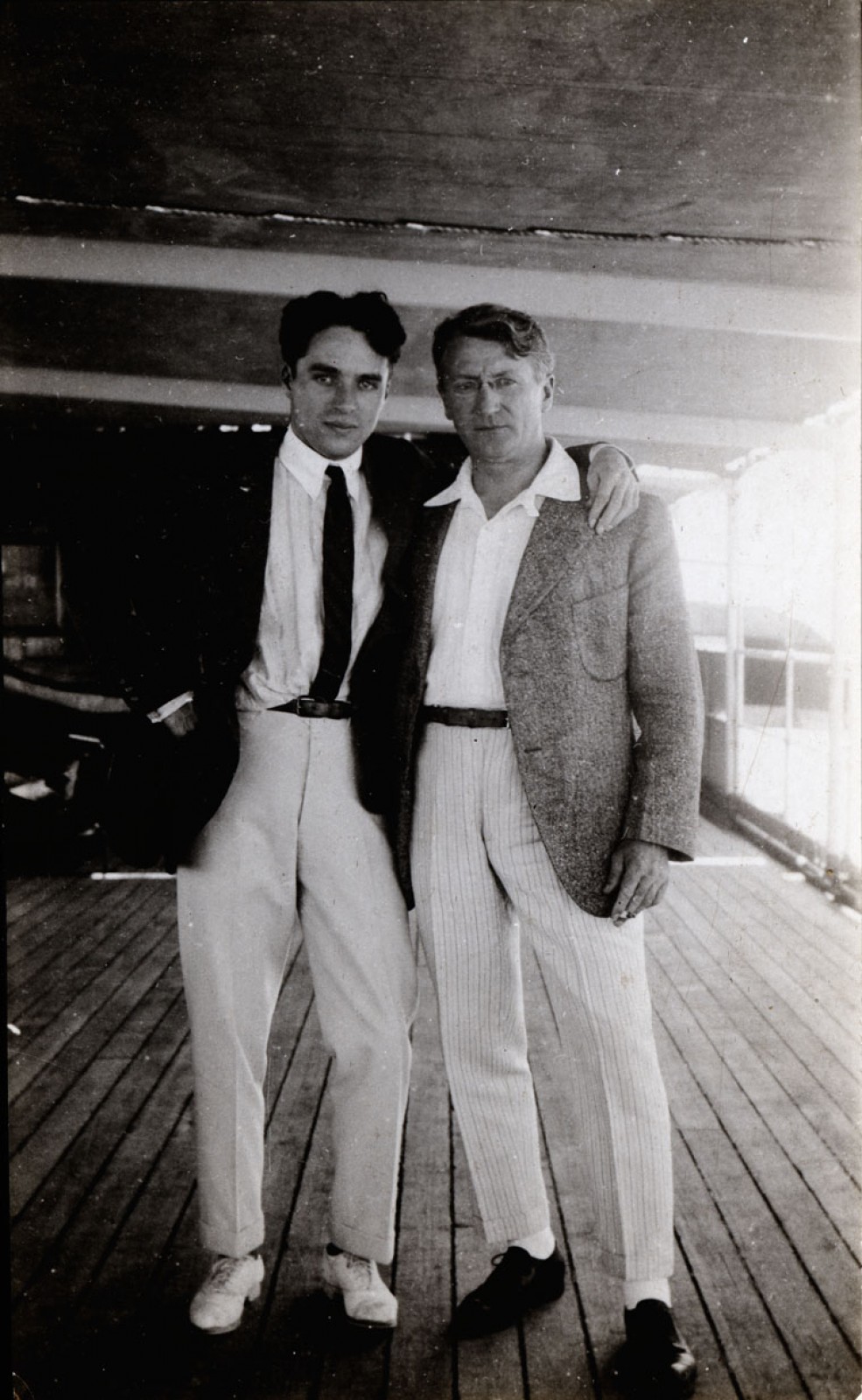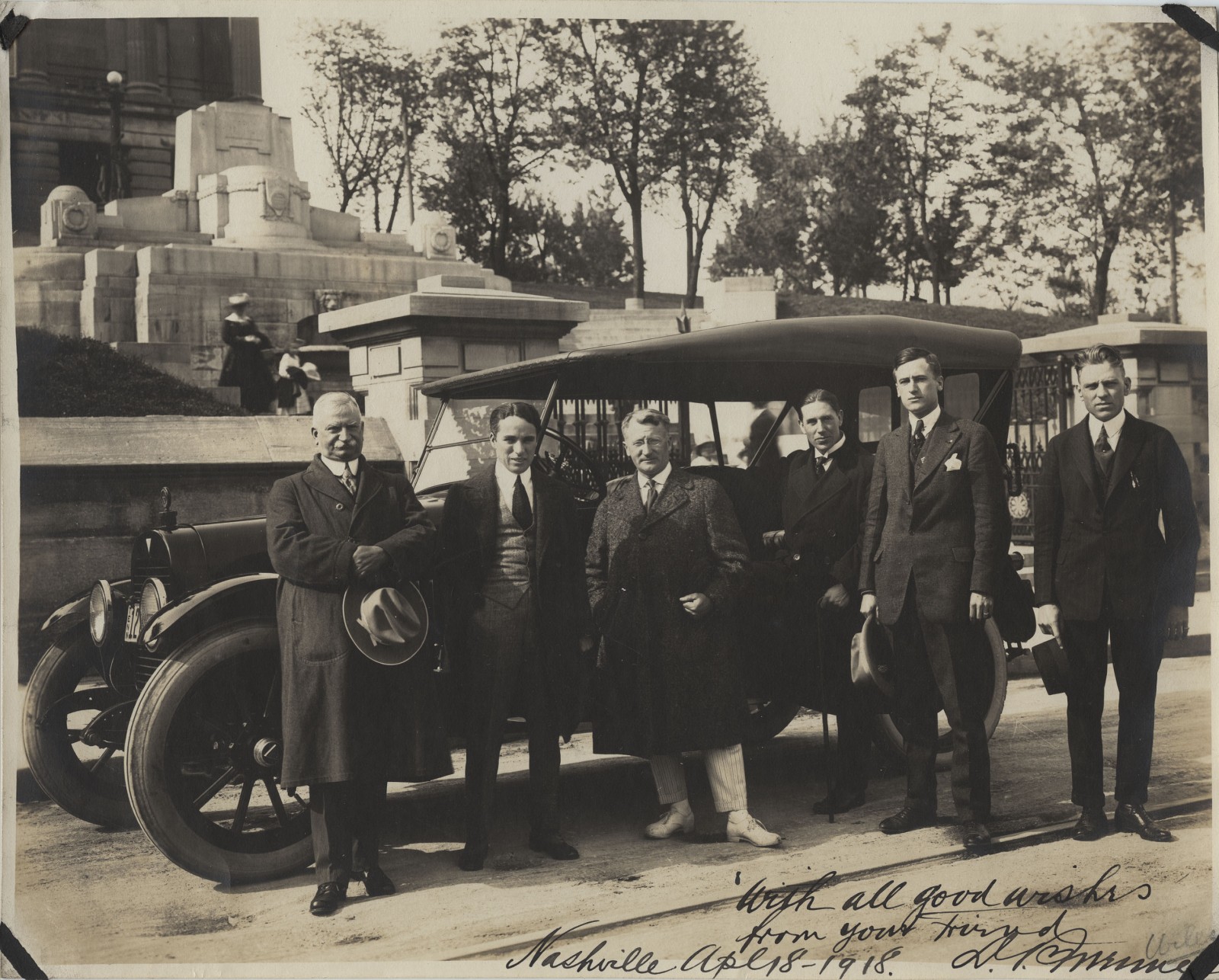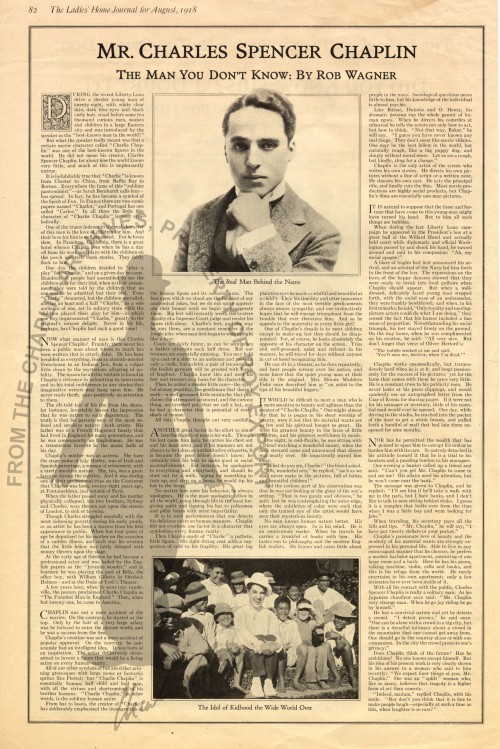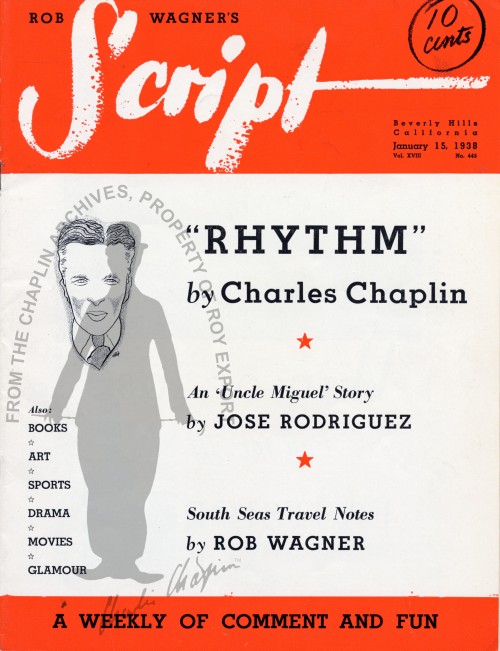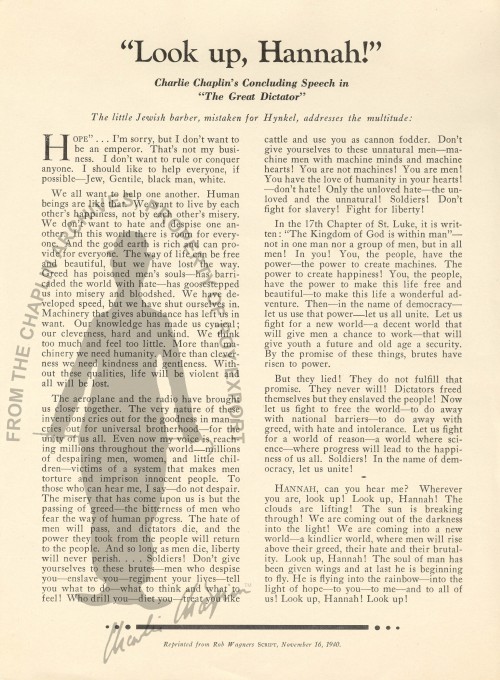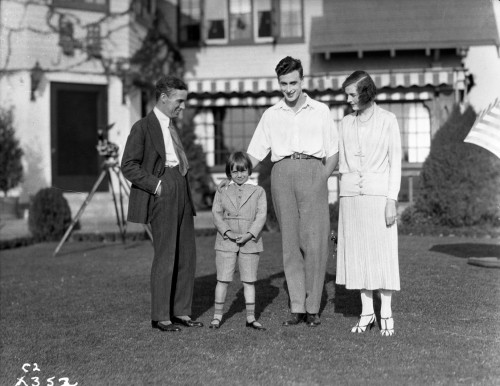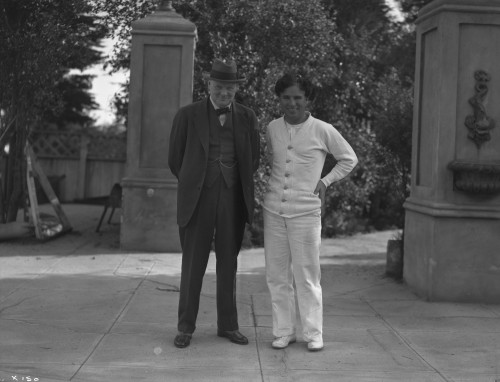Three men are largely responsible for the early transformations in Charlie Chaplin’s political philosophies and understanding: Upton Sinclair, Max Eastman and writer/publisher Rob Wagner. Wagner and Chaplin came together in California sometime in 1917, as a picture on the set of The Adventurer of Chaplin and company, Wagner and his two sons attests. Later that year, he had hung around the A Dog’s Life set at Charlie’s new studio so often that he found himself appearing as an extra in the film. Wagner also performed the duty of chaperone on a trip to Honolulu with Chaplin and leading lady Edna Purviance the next year. About 17 years older than Chaplin, perhaps the longevity of the two men’s relationship - until Wagner’s death in 1942 - lay in Charlie’s need for a father-figure. In any event, Charlie’s relationships with Eastman and Sinclair did not last as long.
Robert Leicester Wagner (1872-1942) had come to Hollywood originally in 1906 at the behest of his first wife’s doctor. Although she subsequently died there, Wagner and his two sons stayed. He had gained his reputation not as a writer but as an artist/illustrator. His second wife, Florence, suggested, however, that being as they were on the cusp of a new and fascinating industry there in California, he write about films and filmmakers instead, which soon lead to great success. Being a lifelong progressive, Wagner decided in 1929 to launch Script magazine, which has been labeled the cultural precursor of the still-flourishing New Yorker magazine. It was known for its frank accounts of America’s socio-political atmosphere, and featured controversial writers such as William Saroyan, Upton Sinclair and Dalton Trumbo.
The heyday of the Chaplin-Wagner friendship took place well before 1929, however. Capping off a two-year stint of a very close period in their friendship, Wagner accompanied Charlie on his Third Liberty Loan tour around the American South in spring 1918.
Archival documents at UCLA Library Special Collections show that Wagner’s left-leaning bent was well-known at the time, because the FBI started following him (and “Chaplin Party,” including Lapworthy, Murphy, Harrington, Chaplin and Wagner) from venue to venue on this trip. Wagner was of interest to the FBI, because he was believed to have troubling pro-German affiliations. The aforementioned “Murphy,” was one John R. Murphy, an FBI agent working undercover within the Chaplin party itself. C. L. Keep wrote on April 5, 1918 that a memorandum book had been taken surreptitiously from Wagner at the Grunewald Hotel in New Orleans. The contents were then dictated into a dictaphone and had yet to be returned to Wagner without his notice. Unfortunately for the Bureau, Wagner had already started his return to Los Angeles with Tom Harrington. Only the remaining Chaplin party members (including the spy) traveled onto Washington, D. C. where concluding Loan tour activities were to be held. Wagner followed the tour with a lengthy article for the Ladies’ Home Journal in August entitled “Mr. Charles Spencer Chaplin: The Man You Don’t Know.” The article, unfortunately, promulgated many of the biographical myths that were only put to rights much later in Charlie’s career.
Charlie fancied himself a writer (he had a lot to say!) but it wasn’t until his 1933-4 five-installment travelogue published in Woman’s Home Companion that he tried and succeeded to write something on his own. This project gave him writing confidence, as is suggested by the lengthy treatments he wrote for future film projects—enough confidence that he had several of his own pieces published in Wagner’s Script after this point, with the short story “Rhythm” being perhaps the most well-known.
